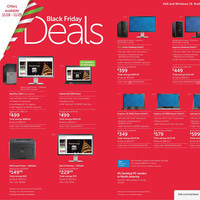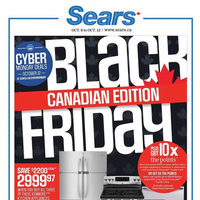The dynamics of Black Friday & Christmas shopping change a little each year. Many savvy retailers will hold debriefings this week to determine what worked and what didn’t when it came to their marketing strategies during the holiday season. Since we cover all major retailers, we are in a unique position to spot what worked and what didn’t for the shopping industry.
Here are some of the key differences we noted in 2009 Black Friday shopping compared to years past.
Earlier Promotions
Black Friday is generally thought of as the day after Thanksgiving, where Christmas shopping begins, but this year, we saw some Black Friday-like activity creep in as early as late October. Some of it had to do with jockeying for position, especially between Walmart and Amazon where the battle began in October over books & DVDs, but heated up when it came to video games and electronics in early November.
Pre-Black Friday short promotions, especially regional ones, appeared to be test beds for pricing strategy. Retailers were weary of the economy for good reason, but the American consumer clearly showed that at the right price, they can be lured into shopping despite tough times.
Alternative Days
Most Black Friday deals obviously occur on the Friday following Thanksgiving, but many retailers attempted to break that mould in 2009. Sears held “Black Friday” deals every Saturday during the holiday season starting on October 31st, Amazon focused on their Daily Deals, and even Walmart broke the mould by holding a couple Saturday-only specials the two weeks leading up to Black Friday.
Despite the off day promotions, Black Friday was still the big event with approximately $10.7 billion in receipts, making it the single largest shopping day of the year followed by December 26th at $7.9 billion.
More Focus Online
In previous years, Black Friday ad leaks resulted in lawsuits. Not in 2009. Retailers did a better job embracing online technology, knowing many customers do their research and spread information via word-of-mouth online. Not only did most retailers share their ads early with sites like BlackFriday.com, but they also built custom print ad display technology for their own sites instead of relying on less user-friendly PDFs.
Throw in some bad weather during peak shopping days, combined with the growing trend to do more shopping online, it should come as no surprise that online shopping saw an impressive 15-20% increase over 2008.
Savvier Shoppers
With more shopping and information sharing happening online, it isn’t much of a surprise that many shoppers are becoming savvier using Black Friday sites, Twitter, Facebook, and other social means to share and discover great deals.
Our Black Friday HDTV guide was our most popular post among consumers, but it also shed some light on retailer pricing for like items (which should be of interest to retailers). Best Buy, in particular, did a great job of undercutting its competitors by as little as $.01 in order to have the lowest price – clearly an indication that Best Buy’s competitive intelligence research is top notch.
2010 Black Friday Shopping
It is hard to say what is in store for Black Friday this year, but we’d expect to see some of the same trends we mention above continue, combined, hopefully, with a strong economy to help set some new retail records.
Did you spot anything worth mentioning as a possible trend? Please share your thoughts by commenting on this post.




